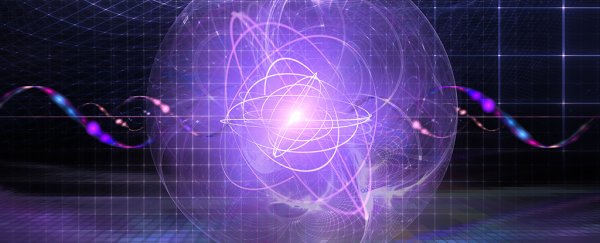Experiments with the metal thorium have revealed a strange quirk that could be used in a totally new class of atomic clock, paving the way to a more precise timekeeping method than we've ever had before.
Right now, the kinds of high-precision clocks we use to coordinate global positioning satellites are based on striking an electron with just the right amount of energy to force it to jump from its orbital and return again.
This tiny quantum leap takes a very precise amount of time, one that can be detected and used as a tiny pendulum - thus most practical modern 'atomic clocks' might lose a second every couple hundred million years or so.
Current efforts by groups such as the US National Institute of Standards and Technology try to improve precision by cooling and increasing the particle's density, but electrons can still be easily nudged every now and then.
Around 15 years ago, physicists from Physikalisch-Technische Bundesanstalt (PTB) in Germany began to take seriously the possibility of using transition states in an atomic nucleus as a way to measure time.
The density of particles packed into a nucleus - such as the one in a thorium atom - means it would be a lot less likely to be disturbed, so could theoretically keep beat with even greater reliability.
The only problem is most atoms need a powerful kick to get their nucleus to transform into an excited enough state to 'tick', so you need beams of X-rays or gamma rays to get them started.
Thorium-229's nucleus stands out for its ability to form an isomer in an excited state that is temporarily stable (known as a 'metastable' state) when bathed in UV light, making it the best candidate so far for an optical atomic clock based on an atom's nucleus.
Turning theory into a practical piece of technology though has proven to be a challenge thanks to the narrow range of wavelengths required.
"As desired for the clock, the resonance of the transition is extremely sharp and can only be observed if the frequency of the laser light precisely matches the energy difference of both states," says physicist Ekkehard Peik.
"The problem therefore resembles the proverbial search for a needle in a haystack."
To go in search for this 'needle', Peik and his colleagues needed to know a few things about the haystack it sat in.
Working with researchers from Ludwig-Maximilians-Universität in Munich, the team analysed metastable forms of the Thorium-229 isomer captured in an excited state as they decayed out of atoms of uranium.
By hitting the trapped atoms with a laser and studying the spectrum of light produced by their shifting electrons, the team could judge the distribution of charge across their nucleus.
The end result is a better picture of the nucleus that will help reduce the range of frequencies required to move the atomic nucleus from a ground state to an excited one, getting it to tick like a clock.
It's not clear just how precise a thorium-based nuclear clock would be, but it would certainly open a window onto a whole new way to measure passing seconds.
Refining the precision of such clocks could play an important role in our search for the elusive identity of dark matter, potentially only detectable as its mass warps time.
This is one needle we're excited to find.
This research was published in Nature.
